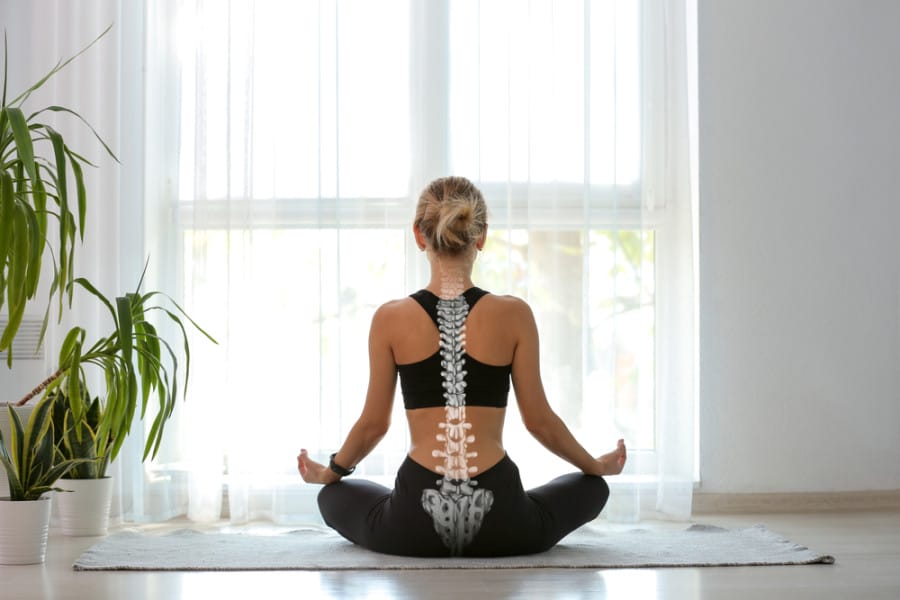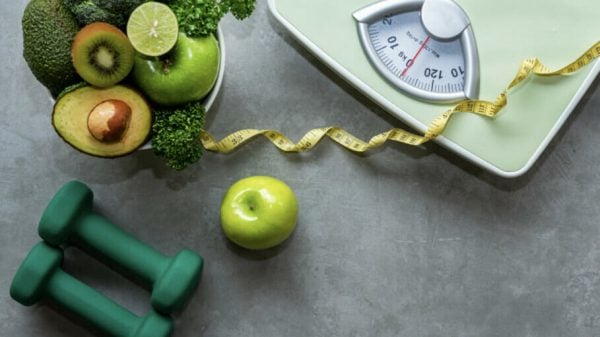So, what’s the reason for this exactly? Well, good posture doesn’t just influence your physical well-being; it also has a positive effect on your mental condition. Conversely, poor posture can increase the strain on your spine by up to 300%, leading to various musculoskeletal problems and overall feelings of low self-regard and diminished confidence.
Examine Your Present Posture
Commence by self-assessing your posture in order to pinpoint areas that necessitate enhancement. Stand at ease in front of a mirror and scrutinize your position. If self-evaluation is challenging, seeking a physiotherapist’s guidance for a professional appraisal is a prudent decision. Common posture concerns encompass a forward head, rounded shoulders, swayback, and slouching.
Establishing a Posture-Supportive Environment
Maintaining good posture is vital throughout the day, particularly in a work environment where individuals invest a substantial amount of time. An ergonomic work environment not only fosters comfort but also diminishes the risk of musculoskeletal problems and amplifies productivity.
An Ergonomic Workspace entails an ergonomic arrangement to guarantee proper body alignment and reduce strain on the spine, shoulders, and neck. Thus, it is imperative that it resonates with your comfort level by ensuring that your chair and desk are appropriately positioned.
Here are some practical suggestions for an ergonomic desk and chair:
Chair Arrangement
– Modify the chair height so that your feet rest flat on the floor and your knees form a 90-degree angle.
– Ensure that the chair provides sufficient lumbar support to uphold the natural curve of your lower back.
– If available, the armrests should enable your arms to rest comfortably and your shoulders to relax.
Desk Arrangement
– Position your desk at a height that allows your arms to rest comfortably during typing, maintaining your elbows at a 90-degree angle.
– Utilize a monitor at eye level to avert neck strain. If necessary, use a monitor stand or adapt the screen height to align with your natural line of sight.
– Store frequently used items within arm’s reach to avoid excessive reaching or twisting.
Additional Considerations
– Take periodic breaks to stand, stretch, and walk a little.
– Deliberate on utilizing ergonomic aids such as a footrest or an ergonomic keyboard and mouse to further optimize body comfort and alignment.
Integrating Stretching Into Your Routine
Stretching is critical for enhancing and preserving good posture by boosting flexibility, alleviating muscle tension, and encouraging proper alignment.
Dynamic versus Static Stretching for Posture Enhancement
Dynamic Stretching
Attributes – Dynamic stretches involve continuous movement through a complete range of motion, often resembling movements utilized in everyday activities or exercise.
Advantages – Ideal for warming up prior to physical activity, dynamic stretching heightens blood flow, enhances muscle performance, and readies the body for movement.
Static Stretching
Attributes – Static stretches involve retaining a single position for an extended duration, typically about 20-30 seconds.
Advantages – Effective for relaxing muscles, boosting flexibility, and augmenting muscle length.
Exercises for Strengthening the Core
Fortifying core muscles is pivotal for preserving good posture. When these muscles are robust, they aid in maintaining proper alignment, lessening strain on the back, and enhancing overall posture. So, which muscles are specifically involved?
1. Rectus Abdominis – This muscle, often known as the “six-pack,” bolsters the spine and assists in upholding an upright posture.
2. Obliques – The internal and external obliques contribute to twisting and rotating the trunk, contributing to overall core stability and posture.
3. Transverse Abdominis – Serving as a natural corset, the transverse abdominis imparts stability to the spine and pelvis, crucial for cross-movements without endangering the spine.
4. Erector Spinae – These muscles run alongside the spine and aid in maintaining an erect posture and supporting the back.
Several effective core exercises can be effortlessly performed without additional equipment such as: Plank, Russian twists, Deadbug, or Bird Dog.
Opt for the Appropriate Footwear = A Crucial Step for Posture Rectification
Shoes form the groundwork for bodily movement, and selecting the appropriate ones is crucial for preserving proper alignment. Ill-fitting or non-supportive footwear can impact your alignment, giving rise to postural problems and discomfort.
Seek shoes that deliver ample support and cushioning to preserve proper alignment of your feet, ankles, and legs. Adequately cushioned shoes absorb impact during walking or standing, diminishing strain on the joints and spine, which can impact posture.
So, how do you select shoes that bolster your posture?
– Seek shoes with commendable arch support that corresponds with the natural curvature of your feet. This aids in evenly distributing weight, deterring overpronation or supination.
– Choose shoes with sufficient cushioning, particularly in the heel and forefoot areas. This cushioning helps absorb shock and diminishes strain on the spine.
– Ensure that your shoes fit well without being excessively tight. Shoes that are too tight can restrict movement and circulation. However, excessively loose shoes can influence stability.
– Discard excessively high heels or entirely flat shoes. Instead, opt for footwear with a moderate heel height that bolsters the natural alignment of the body.
– Opt for shoes crafted from breathable and flexible materials that facilitate natural movement while bestowing support.
– Routinely assess and swap out worn-out shoes, as dilapidated shoes lose their supportive attributes.
Support for the Arches and Foot Alignment
As mentioned earlier, arch support is indispensable for preserving healthy feet, and it directly impacts overall posture and body mechanics. Sufficient support for the arches aids in evenly distributing weight across the feet, diminishing strain on the ankles, knees, hips, and spine.
So, how can you ensure that your arches receive proper support without needing to invest in multiple pairs of shoes with integrated arch support? A practical measure involves considering the use of high-quality insoles specifically designed to provide arch support. Insoles can have a subtle yet pronounced impact on your overall posture.
How attentive are you in your daily life? Do you consciously monitor your body posture and the effects your emotions and thoughts could have on your stance? Mindfulness techniques cultivate a deeper connection between the mind and body, augmenting body awareness and promoting deliberate movement. Practices such as yoga and tai chi can adeptly amalgamate mindfulness with physical movements. Enhancing body and breath awareness and refining the mind-body connection can grant you greater command over your body and an altered perception of it.
Nutrition plays a fundamental role in sustaining good posture by bolstering bone and muscle health and influencing inflammation, which may impact posture. Essential vitamins such as Calcium and Vitamin D are pivotal for bone health, density, and strength, while protein fosters muscle growth and repair.
Adequate hydration is essential for joint lubrication and muscle function. Dehydration can impact muscle elasticity and joint mobility, potentially affecting posture by causing discomfort and disrupting the body’s capacity to maintain proper alignment.
Here are some pointers for enhancing health through nutrition:
– Incorporate Calcium-Rich Foods – Dairy products and leafy greens can furnish the requisite calcium for bone health.
– Sources of Vitamin D – Sun exposure, fatty fish, and egg yolks can help maintain adequate vitamin D levels.
– Nutritious Fats – Opt for foods like avocados, nuts, seeds, and fatty fish to augment overall health and potentially diminish inflammation.
– Hydration – Strive to maintain adequate water intake throughout the day. Aim for at least 8 glasses (64 ounces) of water daily.
Improving your posture necessitates consistent efforts. It is pivotal to make caring for your posture a habitual practice. Here are several daily habits supportive of posture that you should contemplate:
– Mindful Sitting – Pay attention to your spine while seated. Use a supportive chair and ensure your feet are flat on the floor.
– Regular Breaks – Take brief breaks every 30-60 minutes to stand, stretch, and readjust your posture.
– Ergonomic Workspace – Organize your desk, chair, and computer setup in an ergonomically sound manner to bolster good posture.
– Engage Core Muscles – Fortify your core through exercises such as planks or abdominal bracing to bolster better posture.
– Appropriate Footwear – Sport supportive shoes delivering adequate arch support and cushioning.
– Mindful Movement – Integrate activities like yoga, Pilates, or Tai Chi to enhance body awareness and posture, and more.
Be cognizant of your posture throughout the day, whether you are walking, standing, or seated. By integrating these practices into your daily schedule, you can gradually enhance your posture and forestall associated discomfort or issues.
Stay attentive to signs suggesting it is time to seek professional counsel for posture-related concerns. Here are scenarios warranting consultation with a specialist:
– Persistent Discomfort
– Restricted Mobility
– Posture-Related Ailments
– Recent Trauma
– Numbness or Tingling
You can consult a chiropractor, physical therapist, or orthopedic physician, according to your preference. Seeking professional guidance at the appropriate juncture can avert further complications and aid in devising a tailored plan to effectively address posture concerns. Consulting specialists ensures a comprehensive evaluation and tailored interventions aligned with your specific requirements.










